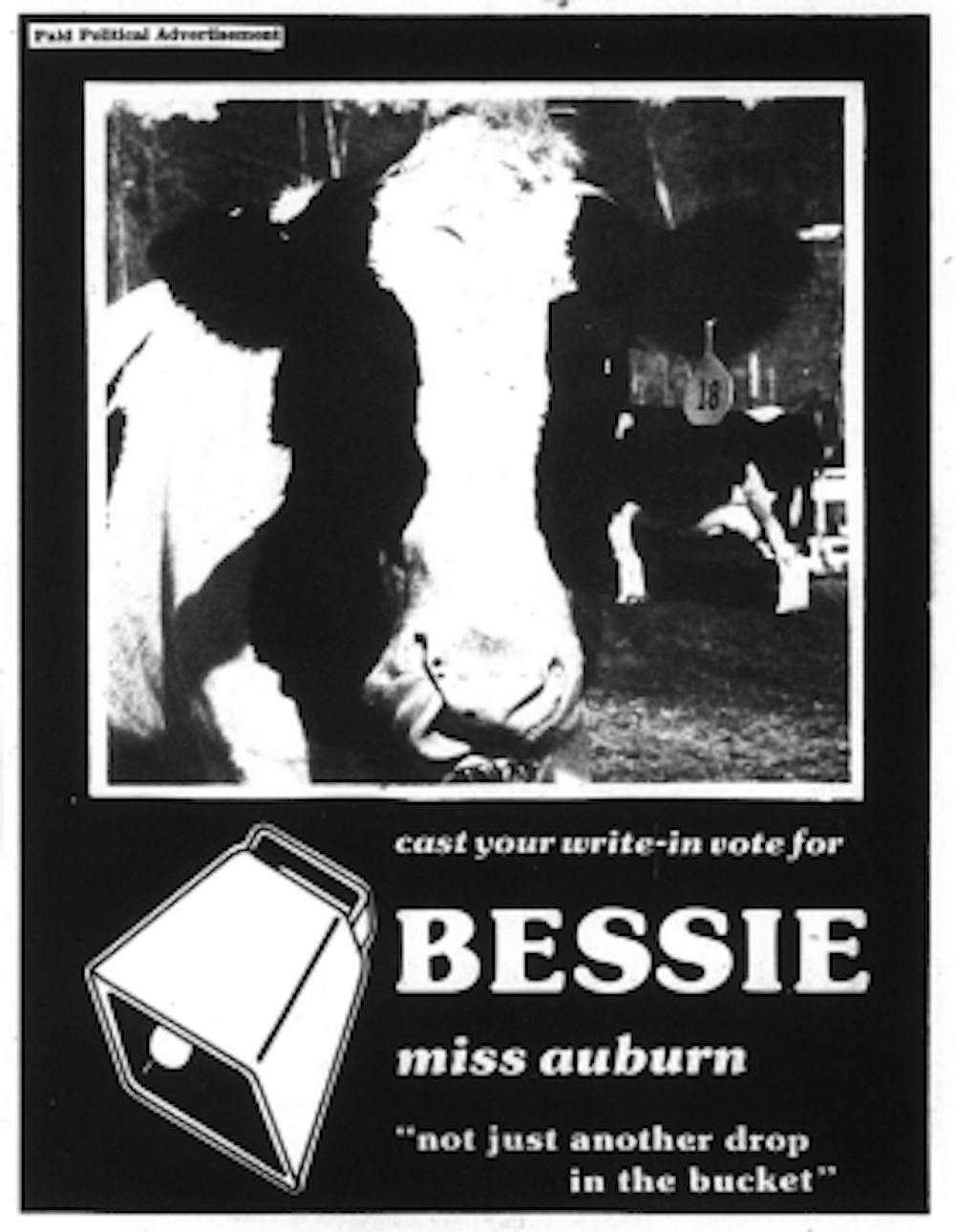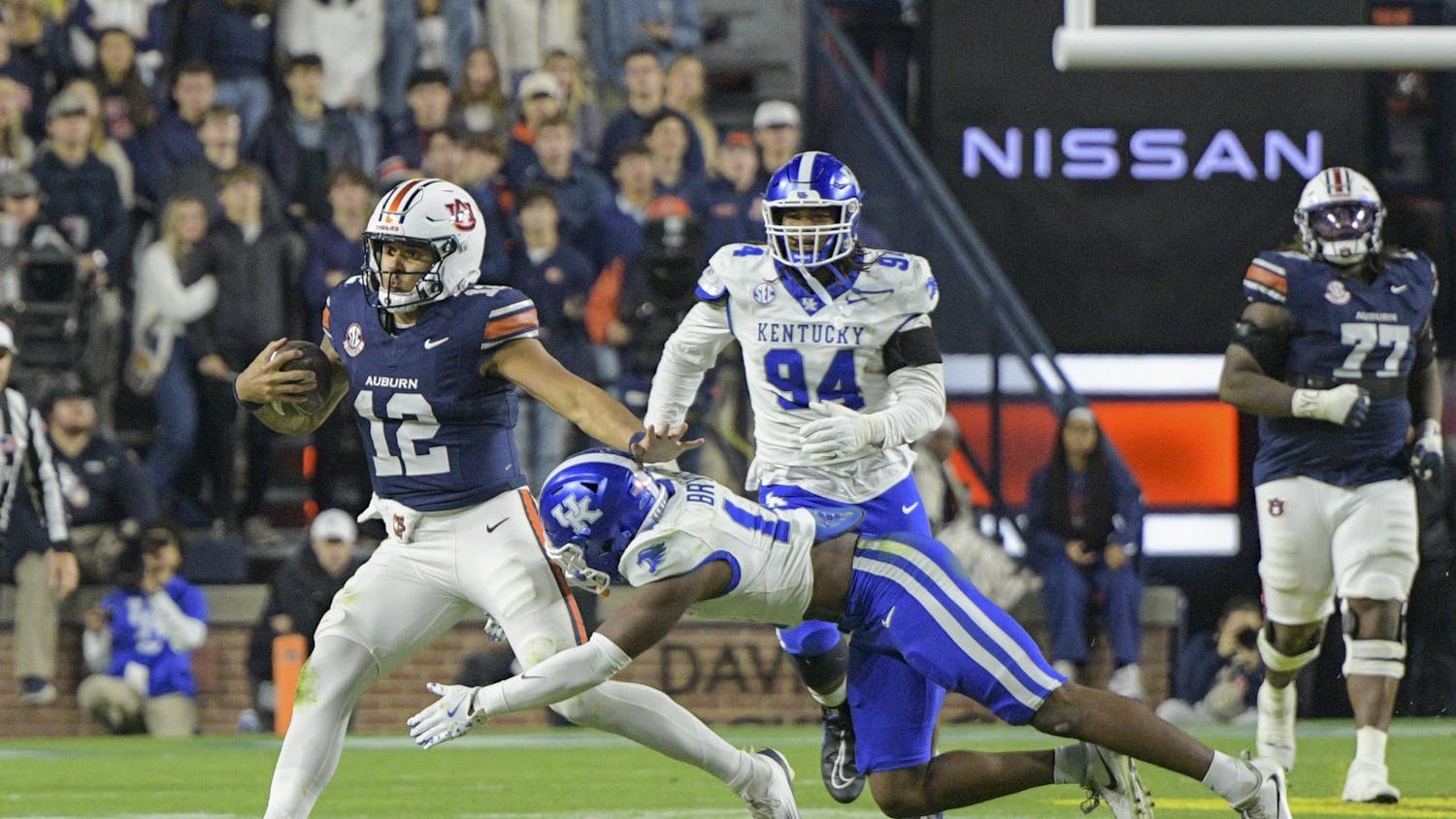When driving through the Alabama countryside, it’s not out of the ordinary to come across field after field of cattle grazing by the road. Easily dismissed as pastoral and picturesque, cattle production is often out-of-mind from the everyday life of metropolitan communities.
However, the significance of the cattle industry in America is hugely overlooked; Alabama itself is home to around 1.2 million head of cattle, and beef production is a $2.5 billion industry in the state, second only to poultry.
Despite their importance, cattle farms are mostly relegated to the rolling hills way outside the city. But along Wire Road and Shug-Jordan Parkway in Auburn, Alabama, is an unusual urban sight — a field of cattle in the middle of town, grazing just behind softball fields and fraternity houses.

Auburn University’s history as a leader in agricultural work dates back to 1872 when it became the South’s first land-grant university, established for the purpose of education and community outreach in engineering and agriculture. Since then, Auburn has become known for its commitment to education and excellence in these areas.
Also famous is Auburn University’s iconography: Aubie the Tiger, the "War Eagle" cheer and a lesser-referred-to nickname for the school: "Cow College."

Jersey dairy cows graze in front of Comer Hall, 1924. | Contributed from the encyclopedia of Alabama
Auburn University’s prominence in the field of agriculture was so historically associated with the school that in 1972, before Auburn’s legendary "Punt Bama Punt" Iron Bowl, Paul "Bear" Bryant himself declared at a press conference how much he wanted to "beat that cow college."
Auburn went on to defeat Alabama with a score of 17-16, and despite being meant as an insult, the Auburn student body was proud of the university’s agricultural heritage, and the nickname stuck.
So beloved was the name that in 1979, a cow named Bessie was nominated and crowned Miss Auburn in a landslide election. With a colorful backstory, including her membership in the made-up sorority Mu Omega Omega (MOO) and captaining the "pasture muffing throw team," Bessie became a symbol of Auburn University's pride and embrace of the "Cow College" identity.

Campaign poster for Bessie the Cow to be Miss Auburn, 1979 | Contributed by the War Eagle Reader
Auburn’s dedication to agricultural development continues strongly today. Its Animal Science department plays a vital role in innovative research on bovine production.
Built in 2003, Auburn’s Beef Teaching Center consists of 100 acres of grazing land spreading across campus and the Auburn metro area, with 90 more acres north of Auburn. It functions as an active learning laboratory and manages a herd of approximately 60 head of cattle. Attached to the Beef Teaching Center is the Lambert-Powell Meat Lab, a state-of-the-art learning site for meat processing.
Auburn University also has a commercial dairy unit through the College of Veterinary Medicine, which is a fully functioning dairy producer while also serving as a livestock medicine teaching center for veterinary students. They provide medical and emergency services to dairy herds across the Southeast, and perform farm visits to other commercial dairies.
Through the university’s Animal Science and Beef departments, Dobriyin Harris is a master’s student performing research on pest management for cattle, specifically the horn fly.
Pests and pest management cost the cattle industry over a billion dollars a year, and because of growing resistance to insecticides, Harris contributed to the development of an alternative method: a horn fly vaccine. The infestation of horn flies in cattle herds can cause decreased weight and milk production.

Horn flies swarm a cows face | Contributed by IFA
She also participates in the research of a possible connection between the gut microbiota of horn flies and other high-cost risks in cattle production, such as bovine respiratory disease (BRD). Studies suggest a link between the disease and the animal's respiratory biome, which may be disrupted by outside hosts.
BRD is a complex of bacterial or viral infections in the respiratory system and is a leading cause of death in the cattle industry. Mortality rates of cattle, along with decreased weight gain, higher feed requirements and cost of medical treatment that come with the disease, result in substantial economic loss for producers.
The economics and health of livestock populations go hand in hand, and another master’s student, Chandler Kyle, focuses on this intersection in his research. A member of the Ruminant Nutrition and Beef Forage Team, Kyle is studying the toxicology of cotton seed — a low-cost food source for cattle.
Livestock feed accounts for the highest percentage of production costs, and cotton seed is a sustainable and plentiful source, but contains toxins that can only be consumed in limited amounts. Kyle's research seeks to find a more precise limit of cotton seed consumption, which would prioritize animal health while simultaneously improving feed costs.
“It…matters how we’re caring for our livestock and our food animals,” Harris reflected. “It’s how so many people, generations after generations, provide an income for their family…There’s not a lot of knowledge about these various industries and how it plays a role in agriculture.”
Kyle, who grew up in a small beef operation, expounded on Harris’ thoughts.
“[Agricultural] literacy is the number one problem facing the ag industry…There are so many misconceptions,” Kyle added.
“Our job as researchers, farmers and producers…is helping people understand what we do, why we do it — that we care about the animals that we produce, both from being a steward of the land and just because we have an economic incentive to do so.”
Livestock management plays a large role in rural welfare, and cattle production is vital to feeding America and its economy. From hamburgers at the family barbecue to the milk in your breakfast cereal, the cattle industry is essential to food systems and contributes billions of dollars to U.S. economics.
“One thing that…will always…be around are our food animals,” Harris remarked.
Auburn University’s moniker as "Cow College" is more than just a fun, affectionate nickname — it is also a reminder of agriculture’s importance to the university, our community and how necessary it is to be educated on it.
In the words of Harris, “[Agriculture] makes everything go around.”
Do you like this story? The Plainsman doesn't accept money from tuition or student fees, and we don't charge a subscription fee. But you can donate to support The Plainsman.





